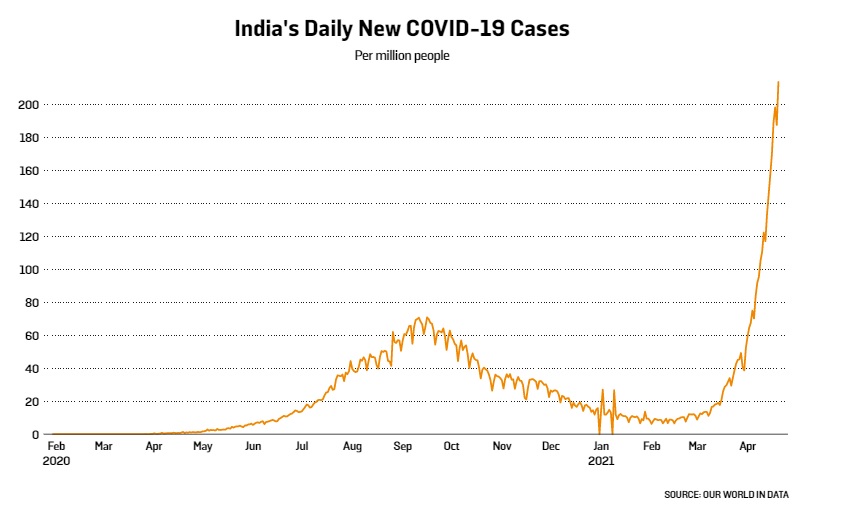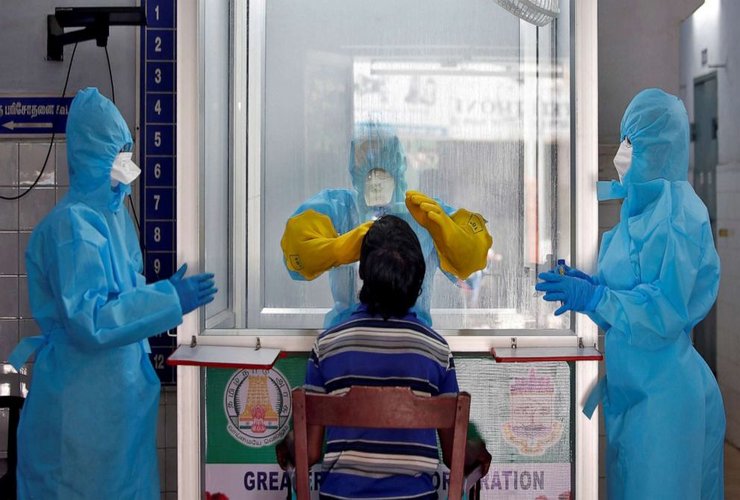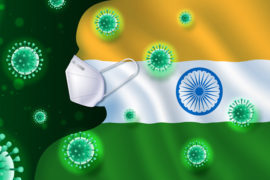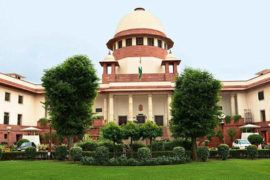India is now the epicenter of the coronavirus pandemic. Just weeks ago, it was registering around 50,000 new daily cases.
On Thursday, the country registered nearly 315,000 new cases in a 24-hour period—a new pandemic world record. India’s COVID-19 curve has nearly become a vertical line.
Thursday was also India’s deadliest day yet, and concerns about underreporting mean the toll may be higher. A new Lancet study warns that if the situation in India fails to improve, it could suffer 2,300 daily deaths by June.
Critics have in part faulted New Delhi for its imperious handling of the current crisis, which appears driven by the spread of a new variant. The government was slow to respond, even though it knew a ferocious second wave was possible by late last year. As Kunal Purohit writes in Foreign Policy, “India is hurtling toward a public health emergency.”
The public health situation is already dire: India is collapsing under the weight of disease and death. Hospitals are dangerously low on oxygen, and patients are sharing beds. In Gujarat, Prime Minister Narendra Modi’s home state, crematorium furnaces are melting from overuse. And although India launched a mass vaccination campaign in January, it now faces major shortages, in part because it exported millions of vaccines abroad earlier this year.

When the pandemic first hit India last year, New Delhi acted quickly and declared a nationwide lockdown, and its initial wave was relatively modest. During its initial peak in September, new daily cases never exceeded 100,000.
India appeared close to defeating the virus as recently as February, making its current spike all the more surprising. That month, India recorded an average of 11,000 new cases daily. In March, India’s health minister declared that that it was in the “endgame” of the pandemic.
So what went wrong? Experts cite the spread of the U.K. variant and frequent large events with unmasked crowds. State election rallies have gone ahead, and a Hindu festival drew millions of people to the Ganges River this month—leading to more than 1,000 new cases. But the emergence of a more contagious Indian strain seems to be the biggest factor.
In March, a government statement warned of new variants that “confer immune escape and increased infectivity.” In fact, the Indian strain may have been circulating as early as October.
Shamika Ravi, a nonresident senior fellow at the Brookings Institution, told Foreign Policy that both the new strain and the increasing number of people leaving their homes explain the current surge. She said the high mobility rate may also indicate why more young people are getting infected in the current wave: They are the ones exposing themselves by leaving their homes for work and leisure. Mobility rates for older people have been lower during the pandemic.
The recent spike doesn’t necessarily suggest the government’s earlier pandemic response was ineffective, according to Ravi. In previous months, new cases and deaths had declined, and hospitals and crematoriums weren’t overflowing as they are now. The second wave is a “new beast, given the speed, magnitude, and virus strain,” she said.

Nearly 20 million Indians have been fully vaccinated, but in a country of more than 1 billion, that barely includes 1 percent of the population. Although New Delhi has announced that on May 1 anyone over the age of 18 will be eligible, shortages could limit the benefits of this expansion.
On Tuesday, Modi addressed the nation, vowing to increase oxygen and other critical supplies, but his speech offered few specifics about a broader plan. Meanwhile, ruling party leaders have mocked the opposition’s offers of cooperation, boasted about the crowds at state election rallies, and berated journalists raising concerns about the crisis.
Without critically needed supplies, Indian vaccine production lines could grind to a halt in weeks. The government hopes that the United States will ease export controls on raw materials for vaccines so that India can ramp up production, as articulated in an appeal by the head of India’s top vaccine manufacturer. The Biden administration suggests it’s sympathetic but not yet ready.

India’s coronavirus crisis has international implications, too. Indian travelers have brought the virus to places with low infection rates, such as Hong Kong, and the government’s vaccine export reductions have left intended recipients in the lurch, including many developing countries relying on the COVID-19 Vaccines Global Access initiative.
The rate of new cases shows no sign of slowing down. Ominously, scientists fear that another variant detected this week in West Bengal could eventually become India’s most infectious strain yet. Although some states have announced brief curfews, Modi has declared that lockdowns should only be a last resort. With India still struggling to tame the beast, its pandemic nightmare isn’t likely to end anytime soon.






